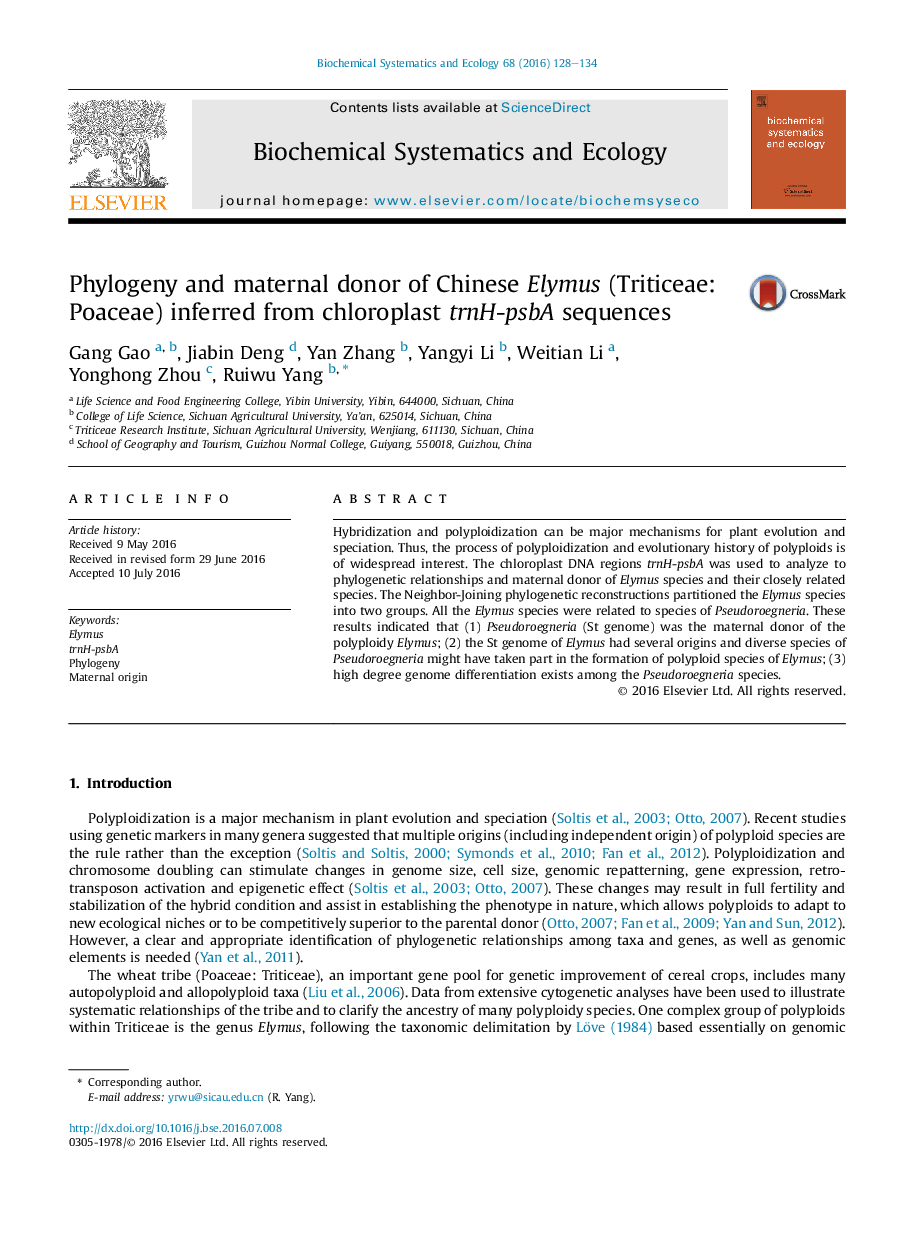| Article ID | Journal | Published Year | Pages | File Type |
|---|---|---|---|---|
| 1355139 | Biochemical Systematics and Ecology | 2016 | 7 Pages |
•trnH-psbA sequences was used to analyze phylogenetic relationships of Chinese Elymus species and their closely related species.•trnH-psbA sequences was used to analyze maternal donor of Elymus.•trnH-psbA sequences was used to analyze genome differentiation of Pseudoroegneria.
Hybridization and polyploidization can be major mechanisms for plant evolution and speciation. Thus, the process of polyploidization and evolutionary history of polyploids is of widespread interest. The chloroplast DNA regions trnH-psbA was used to analyze to phylogenetic relationships and maternal donor of Elymus species and their closely related species. The Neighbor-Joining phylogenetic reconstructions partitioned the Elymus species into two groups. All the Elymus species were related to species of Pseudoroegneria. These results indicated that (1) Pseudoroegneria (St genome) was the maternal donor of the polyploidy Elymus; (2) the St genome of Elymus had several origins and diverse species of Pseudoroegneria might have taken part in the formation of polyploid species of Elymus; (3) high degree genome differentiation exists among the Pseudoroegneria species.
